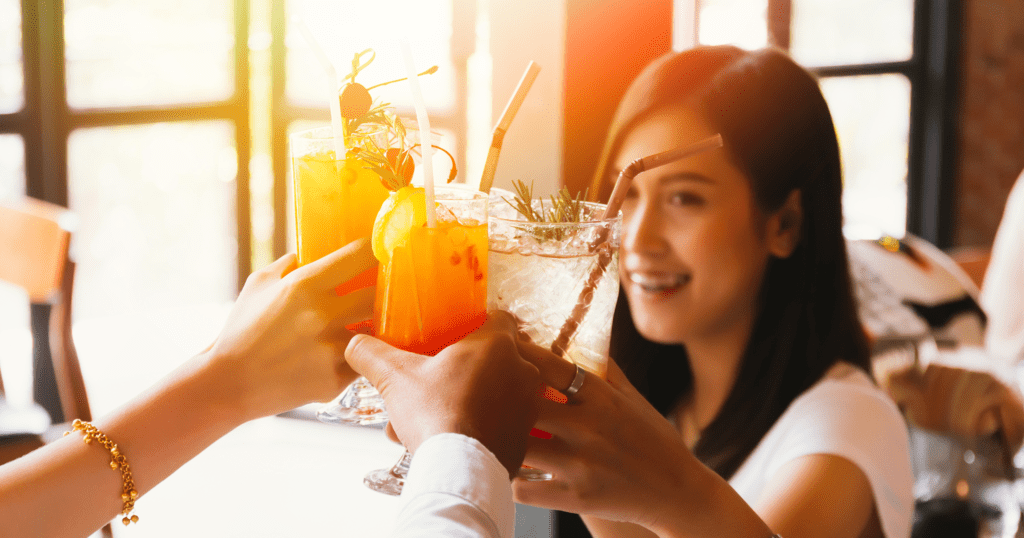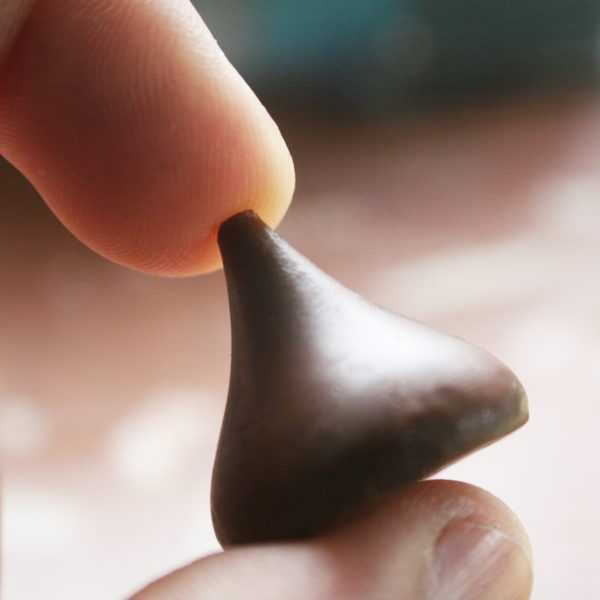From Kitchen Juicer to Whole Foods: Connecting the Dots with Laura Taylor


Anyone who has navigated sober socializing is probably painfully familiar with this routine: you order the non-alcoholic option (usually seltzer or soda), and more often than not, it comes in a clunky glass with a red straw. Your choice and its less-than-impressive presentation signal that you aren’t imbibing. That in turn, can conjure unwanted questions or attention.


A few years ago, Philadelphia-based Laura Taylor, creator and owner of Mingle Mocktails, had quit drinking. During a girls’ weekend, she grew tired of the less-than-fun seltzer in the boring glass with the colossal straw and was determined to come up with an alternative. Drinking alcohol wasn’t an option, and she still wanted something more festive and sophisticated than soda, juice, or seltzer. She found nothing on the market to satisfy her need.
Turning to her juicer and armed with a bevy of produce from the supermarket, she made her first mocktail, which served as the inspiration and prototype for the Mingle Cranberry Cosmo. “It was sparkling and citrusy,” she says. “I’m not a mixologist. But it tasted really good to me.”
Mingle Mocktails hit the beverage market in 2017 with alcohol-free drink choices that include the Cranberry Cosmo, Moscow Mule, and Cucumber Melon Mojito, selling for $9.99-$12.99 per bottle. Taylor has also sought to bring Mingle mainstream, and her efforts have paid off. In addition to being available online and in regional liquor stores, consumers can find it at national supermarket chains, including Whole Foods. Mingle also added generated buzz when it partnered with Margaret Josephs of Bravo’s Real Housewives of New Jersey, encouraging fellow mocktail enthusiasts to come “Mingle with Marge.”
Taylor Connected the Dots with This Is Capitalism about her mighty quest for a mocktail that could. Edited excerpts are below.
Q: How hot is the mocktail market right now, and how does that impact Mingle?
A: [We found that] 30% of Americans don’t drink [annually] while double that number actively take breaks. In 2020, [an additional] 30% of Americans participated in Dry January, the ritual where they abstain from alcohol for the first month of the new year, and the non-alcoholic segment is forecasted to be over $20 billion globally and roughly $4.5 billion in the US by 2025.
Mingle exceeded sales targets for 2020 with 225% year-over-year sales growth. Our direct-to-consumer market led the charge as online sales grew over 1200%. In 2020, we did roughly one-third of our business online.
Q: How did you get started with a beverage company?
A: I Googled “how to start a beverage company” and finally found someone who seemed very authentic, honest, and transparent. I appreciated his thoughts on what entrepreneurs should and shouldn’t do. He is based in the U.K., and I reached out to him to see if he had a local connection. He put me in touch with an incubation firm.
Q: What was the experience of working with an incubation firm like?
A: While some incubation firms are comprised of people who are looking to take advantage of inexperienced entrepreneurs, I engaged with a firm with great references and solid people. Our partnership was a short-term contractual arrangement as they helped me turn my concept into reality with a brand name, design, and initial supply chain components.
They helped me land on a name and the label and the brand presence and identified the critical vendors needed to create a beverage launch. They also helped me find suppliers for juices and somebody who is still a dear friend of mine today who converted my little recipes to formulas that could be mass-produced, and a bottler.
Q: Tell us about Mingle’s journey from your juicer to the shelves at Whole Foods.
A: After I had a product, I did samplings on the weekend at local grocers and was able to interact with customers directly. I knew I had a winner when I sold through the grocery store’s inventory every weekend I did samplings.
When I had that first batch of Mingle in November 2017, I walked in and talked to them, and I learned how hard it is to get in. Amazon had just acquired them, and they told me I had to go through the Whole Foods website, which is a black hole, but I was working on other options in the meantime.
I took the approach that I would understand the process, get to know the key players, and try to stay professional and consistent, and I stayed in touch with them and reminded them why this is important. I got a couple of significant lands at Safeway and Albertsons where my aggressive approach served me well to prove the product. Once I landed those, I started getting credibility and the tone from merchants changed throughout those experiences.
Q: What role did access to capital play for you as an entrepreneur?
A: As far as getting access to capital, I’m very grateful for our country and being in the United States, where we have the infrastructure and the resources to do things that many countries can’t even come close to. So especially during COVID and working with the Small Business Administration, that access has been amazing to me.
Q: We can’t get away from this conversation without dishing on your partnership with Margaret Josephs. What tea would you like to spill?
A: After a series of events that included realizing that a cousin of mine represents her for merchandising deals, we met. What I love about Margaret is she’s bold. She’s hilarious. She’s authentic. And, she’s been great in giving me exposure and followings, especially in the gay community. There’s a gentleman who does drag and has made his career doing shows in New York. He told me he’s doing online shows, doesn’t drink anymore, tried the product, and is obsessed and is now doing giveaways because he supports my personal mission to provide consumers an adult beverage that helps them feel like they are part of the fun without having to drink alcohol.
Q: What advice do you have for other entrepreneurs chewing (or swizzling) over a potential project?
A: In 20 to 50 years, do you want to look back on this time and say, ‘I wish I would have tried?’ That, I think, is a wonderful test as to how much you want to do this and how committed you are to the concept or the business idea you want to build. That question was key for me.

